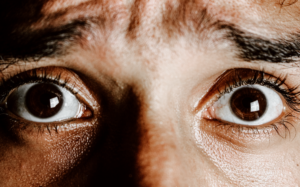How to calm a panic attack?
What Is a Panic Attack?
As a writer, it’s not uncommon to feel a bit nervous when staring at a blank page. But have you ever experienced a sudden surge of overwhelming anxiety, accompanied by physical symptoms like heart palpitations and shortness of breath? That is what we call a panic attack. In this article, we’ll break down exactly what a panic attack is, and explore some techniques for managing its symptoms.
Causes of Panic Attacks
Picture this: It’s a beautiful day outside, the sun is shining, the birds are chirping, and you’ve got a smile on your face. Suddenly, out of nowhere, you feel like your heart is going to jump out of your chest, you can’t catch your breath, and you’re incredibly anxious. You might think you’re having a heart attack or going crazy, but it could be a panic attack.
So, what are the causes of these episodes? As it turns out, panic attacks can be triggered by a variety of things.
Major life transitions or severe stress, like a new job or a big move, can trigger a panic attack. But it’s not just external factors that can bring on the panic. Certain medical conditions like mitral valve prolapse, hyperthyroidism, and hypoglycemia can all contribute to the chaos. I encourage people with anxiety to speak with their primary care provider about the panic symptoms and rule out any underlying medical conditions.
But wait, there’s more! Stimulant use and medication withdrawal can also cause sensations of panic. So you might want to think twice before hitting up Starbucks for your third iced coffee of the day.
And if all else fails, sometimes your body just likes to mess with you. Panic attacks can be spontaneous with no apparent cause which can be frustrating and limiting to your everyday life. The overwhelming fear of having future panic attacks can even make your anxiety worse.
But don’t worry, although panic symptoms may seem scary and uncontrollable, there is help out there. Just remember to take a deep breath, try some relaxation techniques, and maybe stay away from too much coffee for a while.
Symptoms of Panic Attacks
Ah, panic attacks… you know what I’m talking about – that feeling of sudden and overwhelming anxiety that makes you feel like your heart is about to jump out of your chest. But wait, there’s more! Next, come the hot flashes, the intense fear, the shortness of breath… need I go on? Let’s dive into the world of panic attack symptoms.
Physical Symptoms
It’s essential to recognize the physical symptoms that accompany an unexpected panic attack so we can take the necessary steps to manage it.
First up, we have the racing heartbeat or palpitations. Your heart seems to be on a joyride without you. It may be beating so fast that you believe you’re about to have a heart attack. Slow down, heart. In spite of the strong physiological response, it is rarely a medical emergency. We’re still alive.
Then, there’s the feeling of shortness of breath, rapid breathing, shallow breaths, or a choking sensation. It’s like your body has decided to be a vacuum cleaner and suck in all the air it can find. Unfortunately, it’s not helpful, and you end up hyperventilating like a fish out of water.
And let’s not forget the notorious chest pain. It may feel like an elephant is sitting on your chest, and it’s hard to breathe. But don’t worry; it’s just your body’s way of telling you it’s time to calm down.
Sweating, oh the sweating. You might feel like you’re in a sauna, but there’s no exit, and it’s starting to get steamy.
Finally, we have the numbness. It’s like your limbs are suddenly not yours anymore. They’re heavy, tingly, and you can barely move them. It’s like being in a bad dream that you can’t escape, but this time, it’s real life.
All these physical symptoms may be overwhelming, but it’s vital to remember that they will pass. Panicking will only make it worse. Take a deep breath, count to ten, and repeat after me: “I can handle this.”
Cognitive Symptoms
We’re going to dive into the cognitive symptoms that go along with panic attacks. Don’t worry; we’ve got your back.
When it comes to cognitive symptoms, panic attacks don’t hold back. You might feel like the world is crashing down around you. The fear can be overwhelming, and you might feel like you’re on the brink of a mental breakdown.
One of the most common cognitive symptoms of panic attacks is the feeling of loss of control. It’s like your life is a roller coaster, and you’re just along for the ride. But fear not; mindfulness can help bring you back to the present moment and give you a sense of control. So close your eyes and focus on your breath. You got this!
Another cognitive symptom that can accompany panic attacks is the feeling of detachment from reality or derealization. It’s like you’re living in a surreal dream world, where nothing makes sense or seems unreal. Remember that this feeling is only temporary. By practicing mindfulness and staying aware of your surroundings, you can bring yourself back to reality and ground yourself in the present moment.
Lastly, let’s talk about the fear of dying. Yep, it’s a thing. The ultimate loss of control. You might feel like this is it but it’s just your mind playing tricks on you. Remind yourself that you are safe in your body and in control. And don’t forget, working with a mental health professional goes a long way. For example, cognitive behavior therapy (CBT) can help you reframe these negative thoughts and feelings.
In conclusion, cognitive symptoms related to panic attacks can be a handful. But by being aware of these symptoms and practicing mindfulness, you can regain control and prevent panic attacks from taking over your life.
Emotional Symptoms
Alright folks, let’s get real about panic attacks. We’ve all been there – pounding heart rate, sweating, and the overwhelming sense of doom.
First off, we’ve got the classic sensation of fear. It’s like you just watched a horror movie starring your own brain, and now the fear is seeping out of every pore. Luckily there are ways to address and manage this emotion during a panic attack. You can regain some sense of control by focusing on your body (e.g., deep breath, taking a shower, holding an ice cube) and practicing mindfulness exercises through all your sense (e.g., labeling everything you see and hear at this moment). Instead of analyzing your own mind try to break the anxious thinking cycle by focusing your mind on an effortful task like solving a crossword puzzle or math challenge.
If the panic attacks reoccur or you feel a sense of generalized anxiety it is best to seek out professional help. Many mental health professionals specialize in the treatment of panic attacks, anxiety disorders, and anxiety attacks. There are many great resources available for in-person counseling and virtual therapy with a psychologist or LMHC.
It is important to get help early on. Excessive worry about the panic attack can lead to a great deal of anticipatory anxiety and fearing fear itself. You might find yourself fixating on every minor twitch in your body or you might worry that leaving your home could trigger another panic attack. This can intensify your anxiety level, lead to depressive symptoms related to social isolation, and trigger further panic symptoms.
Remember, it’s important to recognize and understand the emotional symptoms of panic attacks and intense anxiety so that they can be properly addressed and managed. Don’t suffer in silence, seek out the help and support that you need.
 Decreasing Anxiety and Panic Attack Triggers
Decreasing Anxiety and Panic Attack Triggers
If you’re anything like me, the words “calm down” feel about as helpful as a band-aid on a deep wound when it comes to managing panic attacks. Here are some simple coping tools that help decrease anxiety and prevent panic attack triggers from ruining our day-to-day lives.
Identifying Your Own Unique Triggers
One of the first steps towards managing your panic attacks is identifying your own unique triggers.
Now, I know what you’re thinking, “How do I even begin to figure out my triggers?”. This is something you shouldn’t attempt when you are already experiencing anxiety. Aim for a neutral emotional state when thinking about your personal triggers. Think back to the last few times you experienced a panic attack. What were you doing? Who were you with? Where were you?
Once you have a clear picture of the situation, start to analyze any patterns that emerge. For example, do you tend to have panic attacks in enclosed spaces or in large crowds? Do financial problems or relationship stressors tend to trigger your anxiety?
It’s crucial to note the environmental and emotional factors that trigger your panic attacks. This can help you avoid or manage those situations accordingly. But, we don’t want to just avoid triggers forever. That’s where specific techniques like exposure therapy and cognitive-behavioral therapy (CBT) come in. These techniques can help desensitize yourself to the triggers and change your response to them over time.
Remember, you are unique and so are your triggers. Common triggers like enclosed spaces, crowds, and financial problems may apply to you, but don’t forget to pay attention to your own feelings and experiences.
Practicing Self-Care and Stress Management Techniques
We all lead busy lives, constantly being pulled in different directions. Pressure and stress can quickly pile up, resulting in anxiety that just won’t quit. That’s why it’s so important to practice self-care and stress management techniques.
First things first, take a deep breath, inhale the good vibes, exhale the bad. Slow, deep breathing is incredibly effective in reducing anxiety and calming the body. Close your eyes, visualize a peaceful scene, and breathe in relaxation.
Another technique that’s gained a lot of popularity is meditation. Meditation can help reduce stress levels, increase concentration, and improve overall mental well-being. It’s like an exercise for your mind, and just like physical exercise, it takes some time to build up the habit. So, let’s start by meditating for a few minutes each day and work our way up to longer sessions. There is no such thing as a “bad” meditation. Even if your mind wanders constantly you are practicing the inner shift that makes meditation such a powerful tool.
Experts have found that exercising at 60 to 90 percent of your maximum heart rate for 20 minutes three times per week can help reduce anxiety. When it comes to exercise, it’s not about going for gold at the Olympics. Even just a few minutes of physical activity can release endorphins, chemicals that trigger positive feelings in the body, reducing anxiety and improving mood. A walk around the block, a few yoga poses, or a dance party with your dog could all do the trick!
Don’t underestimate the power of social support either. Talking to someone you trust can be incredibly therapeutic. It’s important to have open conversations with your loved ones about your feelings and to share your anxieties.
Lastly, the basics are key. A well-balanced diet, staying hydrated, and getting proper restful sleep, are all essential factors in maintaining a healthy state of mind.
Incorporating these self-care and stress management techniques into your daily routine will not only help reduce the impact of anxiety but will also enhance your quality of life. Take care of yourself, because you matter.
Seeking Professional Help for Anxiety Disorders
Seeking the help of a cognitive behavioral therapist with experience in treating anxiety can provide you with the tools to overcome your fears and reframe negative thought patterns. One study found CBT to be between 85% and 90% successful in treating panic.
Together, you’ll identify your triggers, learn coping skills, and gain insight into how to manage your anxiety in a way that allows you to live your life to the fullest.
If needed medication can be a helpful tool in reducing the severity and frequency of intense panic attacks.
And don’t forget to get the medical all-clear, just to rule out any physical health issues. After all, we don’t want to overlook any underlying medical conditions that may be contributing to your anxiety.
So, if you’re ready to take the first step towards improving your mental health and quality of life, seeking professional help for anxiety disorders might just be the solution you’ve been searching for. And who knows, you might just get to know yourself better along the way!
Coping Strategies to Help Calm a Panic Attack in the Moment
Deep Breathing Exercises
Are you familiar with the feeling of being suffocated by anxiety? When your heart races uncontrollably, your mind goes blank, and your body trembles with fear? If you’ve ever experienced a panic attack, you know how overwhelming and scary it can be. But did you know that deep breathing exercises can be a powerful tool to ease your symptoms and help you regain a sense of control?
First of all, why deep breathing? The answer lies in the physiology of panic attacks. When you feel threatened, your amygdala, an important part of your brain for emotional processing, triggers the fight-or-flight response, which releases stress hormones like adrenaline and cortisol into your bloodstream. These hormones signal your body to prepare for danger by increasing your heart rate, blood pressure, and respiration rate. However, if you’re not actually in danger, this response can backfire and cause you to feel more anxious, not less. That’s where deep breathing comes in.
Deep breathing, or belly breathing, is a technique that involves inhaling deeply through your nose, filling your lungs and diaphragm with air, and exhaling slowly through your mouth, emptying your lungs and relaxing your muscles. This type of breathing activates the parasympathetic nervous system, which counteracts the fight-or-flight response by slowing down your heart rate, lowering your blood pressure, and relaxing your muscles. In other words, deep breathing can help you shift from a state of hyperarousal to a state of calmness and relaxation.
So, how can you practice deep breathing during a panic attack? The good news is that you don’t need any special equipment or training to do it. Here are two simple techniques to try:
1. Diaphragmatic breathing: Lie down or sit comfortably and place one hand on your chest and the other on your belly. Breathe in slowly through your nose, feeling your belly rise like a balloon, and exhale slowly through your mouth, feeling your belly fall like a deflated balloon. Focus on your breath and let go of any thoughts or distractions. Studies show that diaphragmatic breathing has many great health benefits that include a reduction in cortisol levels and improvements in mental functioning.
2. The 4-7-8 method: Close your mouth and inhale through your nose for 4 seconds, hold your breath for 7 seconds, and exhale through your mouth with a whooshing sound for 8 seconds. Repeat this cycle for a few minutes, or until you feel more relaxed.
It’s important to note that deep breathing doesn’t work for everyone, and can actually make some people feel more anxious or lightheaded. If that’s the case for you, don’t panic! You can try other strategies such as progressive muscle relaxation, guided visualization, or distraction techniques like counting backward from 100 or naming all the animals you can think of. The key is to find what works for you and practice it regularly so that you can build your resilience and reduce the frequency and intensity of your panic attacks.
In conclusion, deep breathing is a simple but effective technique to calm your panic attacks and improve your mental health. By learning how to breathe deeply and mindfully, you can reduce your anxiety symptoms, enhance your wellbeing, and enjoy a fuller and happier life.


 Decreasing Anxiety and Panic Attack Triggers
Decreasing Anxiety and Panic Attack Triggers